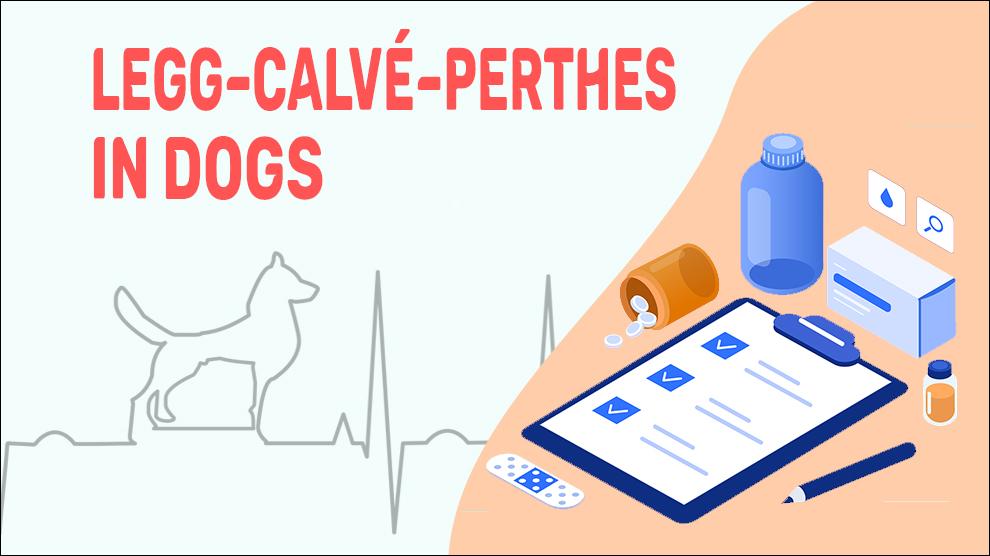What Is Legg–Calve–Perthes In Dogs?
Legg-Calve-Perthes is a rare, developmental, degenerative, orthopedic disease that affects dogs.
Legg-Calve-Perthes disease has other names such as LCPD or LCP disease, aseptic (or avascular ) necrosis of the femoral head, coxa plana, and Osteochondritis juveniles. The name "Legg-Calve-Perthes" derives from the three separate orthopedic surgeons- Arthur T. Legg, Jacques Calve, and George Perthesin, who studied this orthopedic condition in young children in the early 20th century.
The condition starts with the spontaneous degeneration of the femoral head (the ‘ball’ in the ball-and-socket joint in the pelvis) without the necessary blood supply. Over time, this degeneration makes the femoral head deformed, and ill-fitting, and the joint becomes very painful leading to arthritis.
The condition also affects humans and a hereditary cause is suspected, though this has not been confirmed. Despite years of research, the trigger causing the blood loss and degeneration remains a mystery.
Symptoms Of Legg–Calve–Perthes In Dogs
- Limping or Lameness that gets gradually worse
- Trouble getting up
- Trouble walking
- Stiffness in one or both rear limbs
- Chewing or Licking the skin over the hip area
- Holding one leg up
- Muscle atrophy in the affected limb
- Popping, grating, or crunching sensations due to motion (called crepitus)
Treatment Options For Legg–Calve–Perthes In Dogs
For Mild Cases of LCP:
Physical therapy, pain medication, chondroprotective agents (such as glucosamine), and making sure the affected dogs do not become overweight.
In severe cases: Surgery is inevitable. Femoral head osteotomy (FHO) is the most common surgery performed for Legg-Calve-Perthes. This involves the surgical removal of the head of the femur allowing the body to develop a ‘false joint’ comprising of a scar tissue cushioning between the hip socket and the cut edge. This is only recommended for dogs who do not respond to medical therapy as surgery is considered a salvage procedure.
Total hip replacement (THR): this is another surgical alternative and implants are used to reconstruct a functional hip joint. While on paper this sounds like a better procedure than an FHO, studies reveal a similar prognosis between the two procedures.
FHO is significant of lower cost and it is often performed first. When there is no obvious improvement, then THR can be considered.
Home Remedies For Legg–Calve–Perthes In Dogs
The LCP is irreversible without medical management and doesn’t cure on its own that is why vets emphasize surgical intervention.
Prevention Of Legg–Calve–Perthes In Dogs
LCP has been linked to an inherited autosomal recessive gene although not yet confirmed. Therefore, the best method of prevention is responsible breeding practices.
Breeders should keep track of lineages with a lower-grade forms of this disease and stop breeding the dogs.
Affected Dog Breeds Of Legg–Calve–Perthes
Small Breed Dogs, Chihuahua, Bichon Frise, Poodle, Pomeranian, Boston Terrier, Cairn Terrier, Dachshund, Jack Russell Terrier, Fox Terrier, Scottish Terrier, Manchester Terrier, Miniature Pinscher, Miniature Schnauzer, Schipperke, Shetland Sheepdog, Toy Poodle, West Highland White Terrier, Welsh Terrier, Terrier Dog Breeds, Puppies
Additional Facts For Legg–Calve–Perthes In Dogs
Causes:
The exact cause of Legg-Calve-Perthes disease is still unidentified.
It may be idiopathic or because of any other etiology that would interrupt blood flow to the femoral epiphysis, such as coagulopathy, steroid use, injuries, and trauma (macro or recurring microtrauma).
Morbidity:
- LCP is idiopathic osteonecrosis most commonly seen in small dogs, fewer than 20 pounds.
- The disease most commonly affects toy breeds and terriers.
- Lameness = 3-8 months of age, sometimes as late as 18 months.
- LCP has no sexual predisposition and it affects both male and female dogs.
Diagnosis:
- Hips and rear legs radiographs
- Magnetic resonance imaging (MRI)
- Arthrograms
Mortality:
Mortality due to LCP is rare. While LCP disease is not life-threatening, it is certainly life-changing. The restricted mobility and the pain in a dog’s daily life are something to be endured.
Prognosis:
Most dogs bear weight on the limb within 1-2 weeks after surgery and recovery are complete by 2-3 months.
A Femoral Head Osteotomy (FHO) outcome is more favorable than conservative treatment.
With the prompt surgical procedures, almost 100% of these animals will be free of pain and become ambulatory.
When To See A Vet For Legg–Calve–Perthes In Dogs?
Contact your vet right away, if you notice any of the following:
- Muscle atrophy in any of the limbs
- Crepitus- Popping, grating sounds, or crunching sensations
Food Suggestions For Legg–Calve–Perthes In Dogs
Add foods rich in protein, iron, calcium, vitamin D, and Glucosamine throughout the day to help improve LCP condition.
- Beef, fish like tuna, and dairy products - milk and cheeses.
- Plant-based protein sources – Lentils, Chickpeas, potatoes, other Nuts, and Seeds
- Calcium-fortified foods and beverages
- Milk and milk products, such as yogurt and cheese
- Vitamin D: liver, fish, egg yolks, beef
- Cooked spinach and potatoes
- Raw meaty bones, raw chicken wings or lamb flaps
Conclusion
Post-operative monitoring of the pet is especially important to make sure that they begin to use the surgically repaired leg. Most dogs after undergoing FHNO will begin to bear weight within the first 1 to 2 weeks. This procedure can be postponed, particularly if there is a possibility of muscle weakening after the surgery.
In most cases, veterinarian recommends post-operative physiotherapy to restore range of motion and strengthen the muscles.

















